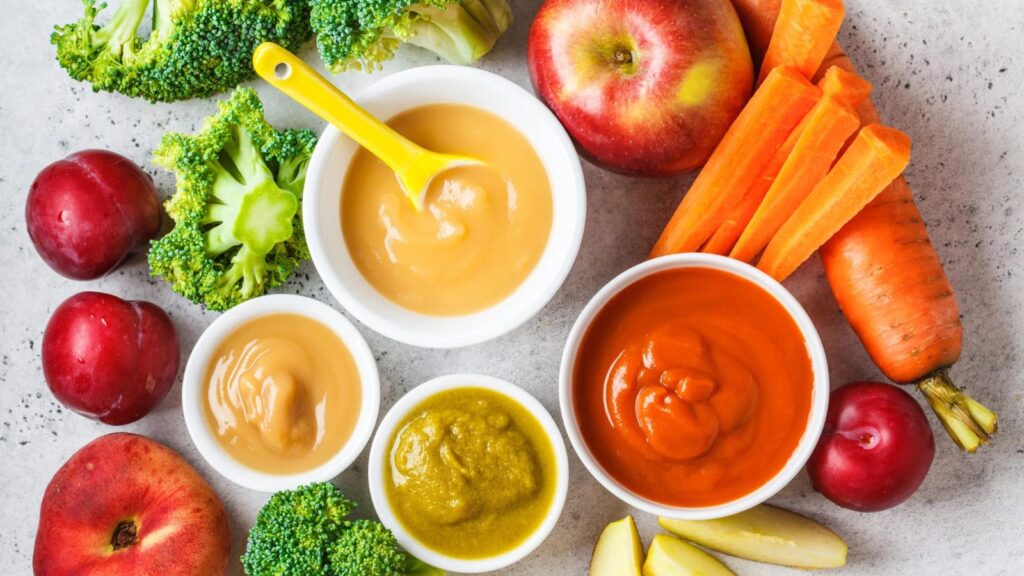1. Introduction to Recipes for Baby Food:
Homemade Recipe for Baby Food is becoming increasingly popular among parents who ensure their babies receive the best nutrition possible. The article covers everything you need to know about making baby food at home, including age-specific recipes, nutritional guidelines, and practical tips for parents. Whether you are just starting with baby purees, or looking for finger food ideas for toddlers, you will find valuable information here.
2. Nutritional Need of Babies:
Babies have unique nutritional requirements to support their rapid growth. Key nutrients include iron, calcium, protein, and healthy fats, which contribute to bone development, brain function, and immune health.
3. Getting started with Homemade Baby food:
Necessary equipment and ingredients
To start making baby good at home you will need some essential products such as a blender, steamer, and storage containers. Choose fresh fruits, vegetables, and grains as the base for your baby’s meals.
Safety Guidelines for Baby Food Prep
Ensure that all equipment is properly sanitized, and follows food safety guidelines to prevent contamination. Always cook and store baby food at the right temperature to maintain quality and safety.
4. Special Diets and Allergies:
Managing allergies and intolerances
Always introduce new foods one at a time to monitor for allergies. If your baby has specific dietary needs consult with a pediatrician to create a meal plan that meets their requirements.
Dairy-free, Gluten-free, and vegan options
Recipes like oat-based porridge or almond milk smoothies are great alternatives for babies with dairy or gluten intolerances. Be mindful of nutrient sources when excluding food groups.
5. Cost-effective Recipe for Baby Food:
Budget-friendly ingredients
Using seasonal produce or bulk-buying grains like oats or quinoa can significantly reduce the cost of preparing homemade baby food.
Time-saving Meal Prep tips
Prepare larger batches of food and freeze them in small portions. This way, you will always have a ready-to-serve meal for your baby, even on busy days.
6. Storing and Freezing Homemade Baby Food:
Best practices for storage
Store baby food in BPA-free containers and label each container with the date. Refrigerated food should be consumed within 48 hours, while frozen meals can last up to three months.
Freezing Tips and Shelf Life
Freeze baby food in small portions, such as in ice cube trays to easily thaw just the right amount for each meal. Always discard any food left over after feeding.
7. Expert Tips For Encouraging Healthy Eating:
Picky Eater Solutions
To overcome picky eating habits, introduce a wide variety of flavors early on. Don’t be discouraged if your baby rejects certain foods initially—repeated exposure often leads to acceptance.
How to Cultivate a Mealtime Environment
Make mealtimes enjoyable by sitting with your baby, engaging in conversation, and avoiding distractions like screens.
8. Recipe for Baby Food FAQs:
- How do I know when my baby is ready for solid foods? Look for signs like sitting up with support, showing interest in food, and losing the tongue-thrust reflex.
- Can I freeze homemade baby food? Yes, freezing is an excellent way to preserve homemade baby food for up to three months.
9. Conclusion:
Preparing homemade baby food is a rewarding way to ensure your baby gets the best possible nutrition. With these recipes, tips, and strategies, you can provide fresh, healthy meals while saving time and money. Whether you’re starting with purees or introducing finger foods, the journey of feeding your baby is one of the most enjoyable parts of parenting.

